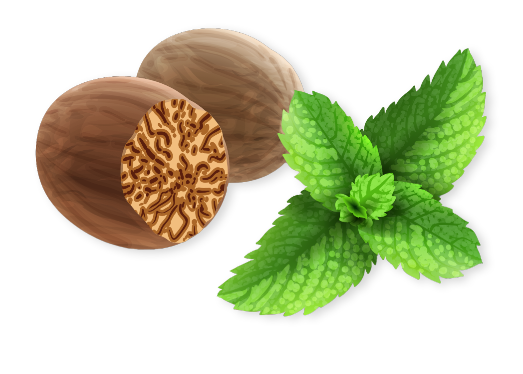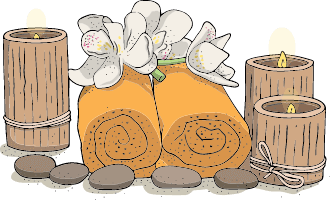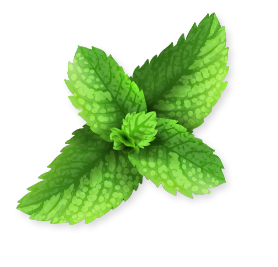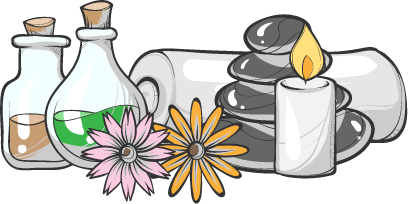
AYURVEDIC TREATMENT FOR
LIGAMENT INJURIES
The ancient healing science of Ayurveda is widely practiced in Kerala, where access to organically-grown herbs in the verdant Western Ghats makes treatments more authentic and viable. Ayurvedic treatment should be taken as complementary therapy to conventional medical care for ligament injuries. Ayurvedic treatment for ligament injuries in Kerala are inclusive of several herbs and herbal formulations, therapeutic massages, panchakarma, yoga and physical therapy. These can collectively help in reducing the inflammation and pain associated with ligament tears as well as help in their healing process. Ligaments are basically bands of strong flexible tissues that join bones together to create pliable joints.
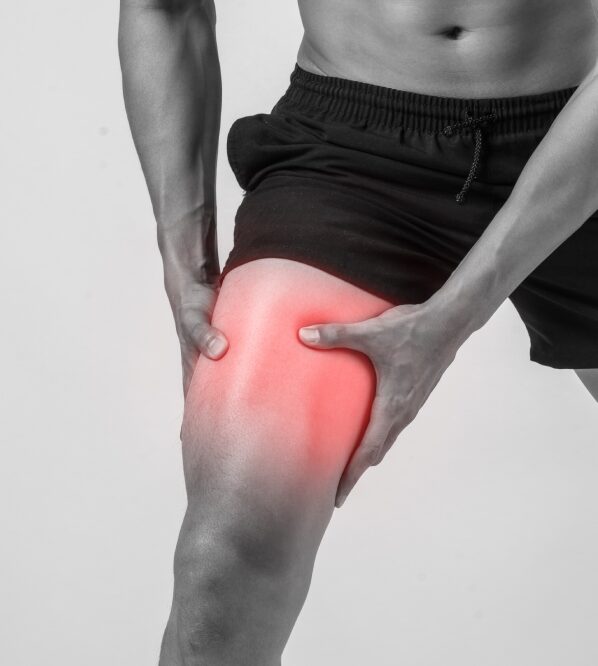
WHAT ARE LIGAMENT INJURIES?
Ligaments are extremely strong bands of supple connective tissue that hold bones or cartilages together to for joints throughout the body. As they are flexible in nature, one of the main ligament function is to maintain flexibility within the joint, such as flexing of the toes and fingers, shoulder joint rotation, or arching of the foot.
However, when the ligament is stretched awkwardly or twisted beyond its normal capacity, sprains or strains can occur. When enough force is applied, outright ligament tears can also happen. Sometimes, illness or overuse of a joint can also lead to ligament injuries. Certain sports injuries result due to repetitive use and misuse of a joint. While sprains refer to stretches or tears in a ligament, strains refer to a twist or tear of a muscle or tendon and usually referred to as soft tissue damage. Tendons are the strong tissue cords that help attach muscles onto bones.
Ligament joint injuries can be divided into 3 grades of injury types. The first grade includes just mild ligament tears that can heal without too much intervention. The second grade includes moderate ligament tears while the third grade is outright or complete ligament tear/rupture.

SIGNS & SYMPTOMS OF LIGAMENT INJURIES
Ligaments are essential for stabilizing and supporting the joints. If a ligament becomes unnaturally twisted or stretched or torn, there can be pain or swelling at the joint. Depending on the extent/severity and location of the ligament injury, the symptoms could vary from pain at the joint, sudden popping sound at the point of injury, bruising, difficulty in moving the joint, stiffness and swelling.
In some cases, there may be joint instability, limited mobility and the patient may be unable to bear weight on the affected joint. Even mild ligament tears shouldn’t be taken lightly and should be evaluated by a medical practitioner if the pain and swelling doesn’t start to subside within 24 to 72 hours, the symptoms start to get worse or you are unable to bear weight on it. Ligament injuries are most commonly seen at the knee, ankle, foot and the shoulders, elbows and wrists, etc.
COMMON CAUSES OF LIGAMENT INJURIES
Even though ligaments are hard and flexible bands of cords that hold joints together, ligament injuries can happen when there are any unexpected traumas inflicted to it. Common causes of ligament injuries are usually due to sudden twists or unexpected wrong movements that put undue pressure on the flexibility of the ligament, leading to its overstretching and tearing. Regular physical activity ensures that ligaments remain supple and fit and capable of encountering mild trauma without resulting in frequent injuries.
People who engage in sports are more vulnerable to sports injury as their joints undergo many sudden changes in direction. Examples are people who engage in sports such as football, hockey, tennis, basketball, etc., all of which require full contact with weight-bearing ligaments. Other accidents like ankle sprains, are mildly torn ligaments of the ankle which can happen when the ankle gets twisted while climbing steps, walking or running.
AYURVEDIC TREATMENT FOR LIGAMENT INJURIES
Ligaments help keep the bones bonded, stabilized and the joints supported. In the case of a ligament tear, the treatment plan will depend upon the location, its severity and the patient’s tolerance to the injury. Aside from the initial rest, ice, compression and elevation (RICE), a doctor’s visit is imperative for proper treatment. You may require a cast, crutches or even surgery, followed by physical therapy and rehabilitation.
Ayurveda has its roots in India, offering holistic healing solutions for ligament injuries. The verdant state of Kerala offers genuine ayurvedic treatment for ligament tear in the knee and ACL ligament tear ayurvedic treatments are known to be among the best here. Some of the ayurvedic treatments include the use of:

Herbal Remedies
Incorporating potent anti-inflammatory, organically grown herbs such as turmeric, guggul, and ashwagandha, this ayurvedic treatment for shoulder ligament tears aids in pain management and swelling relief, making it an ideal therapeutic approach for addressing this specific condition.
Ayurvedic Oils and Massages
Ayurvedic massages employ therapeutic oils like Mahanarayan and sesame oil to address issues like ankle pain, sprains, knee stability, ACL injury, rehabilitation, and sports injuries. The warm medicated oil massage significantly alleviates pain and stiffness, promoting relief and healing in the affected areas.
Diet and Nutrition
A vital aspect of initiating the body’s natural healing process involves adopting an anti-inflammatory diet that includes fresh fruits, cereals, and lean protein. Adequate hydration further supports this approach, promoting overall health and well-being.
Panchakarma
This is an important detoxification and rejuvenation therapy that complements conventional medical care associated with ayurvedic treatment for ligament tear in ankle joint, in knee ligament repair, shoulder pain or rotator cuff treatment. Swedana (herbal steam therapy) is especially helpful in improving circulation and reducing pain associated with knee joint and ACL injury.
Yoga and Physical Therapy
Yoga, an ancient science, plays a crucial role in ligament injury recovery. Trained professionals guide in learning therapeutic poses tailored to different body joints, strengthening and adding flexibility. These phased approaches aid overall recovery. However, it’s important to note that ayurvedic treatments work best as complementary therapies, not replacements for conventional medical care.
Ayurvedic Herbs/medicines for Ligament Tears
Ayurvedic medicines for ligament tears include Ashwagandha, Turmeric, Guggul, Boswellia, Ashwagandha-Shatavari combination, Maharasnadi Kwath, Triphala, etc. These herbs boast anti-inflammatory, analgesic, and antioxidant properties. Incorporating them into your diet or as supplements can accelerate healing in musculoskeletal conditions, particularly ligament injuries.
FREQUENTLY ASKED
QUESTIONS
Are Ayurvedic treatments combined with Yoga or physical therapies?
Ayurvedic treatments and yoga are both ancient practices that are deeply intertwined and have their roots in the Vedic wellness system. Both ayurveda and yoga have originated in India and have been used for centuries to promote physical, mental and spiritual well-being. Ayurveda and yoga form the perfect complement to physical therapy and healthcare and are integrated seamlessly as they share the same fundamental principles and beliefs.
How are Ayurvedic oils used in treating ligament tear?
Ayurvedic therapy known as Pizhichil (warm therapeutic oil poured over the affected area, followed by massage) provides a good amount of pain relief to those with ligament injuries. Not only does it help in reducing the swelling and pain, but it also speeds up the healing process. Gentle massaging with ayurvedic oils such as mahanarayana oil, murivenna oil or sesame oil can be quite beneficial as it improves blood circulation to the affected area too.
What's the difference between Ayurvedic treatment and conventional treatments for ligament injuries?
Ayurvedic treatment for ligament injuries is carried out as a complementary therapy to conventional medical care, and not the other way around. Aside from this, ayurvedic treatment is not invasive in nature and only includes, oral herbal medications, therapeutic massages, panchakarma, yoga and physical therapy, anti-inflammatory diet and rest and recuperation. Conventional therapy could include a cast, crutches or even surgery followed by physiotherapy and rehabilitation.
Can Ayurvedic treatment be used alongside modern medical interventions?
Since ayurvedic treatments are purely natural in origin, they do not overlap with treatments provided by conventional medical practitioners using modern medical interventions. However, the patient should make a point of informing their doctor if they are planning on taking any complementary ayurvedic treatment for their ailments too. This could prevent any unexpected surprises later on during the course of treatment.
Are there any Ayurvedic home remedies recommended for ligament injuries?
Ligaments are strong fibrous cords that connect bones to other bones in joints. When there is a ligament tear, its followed by excruciating pain. You could try applying ice to keep the swelling down, elevate the injured area and give it rest. Turmeric and ashwagandha are easily available and have anti-inflammatory properties and help in reducing pain. You could also consider massaging with warm murrivenna oil which is very effective in pain control, swelling and healing.
BOOK APPOINTMENT
